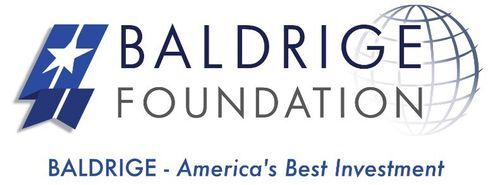When Congress established the Malcolm Baldrige National Quality Award in 1987, it identified three sectors in which an organization could apply for the Award: Manufacturing, Service, and Small Business.
In keeping with the initial intent to challenge foreign competitors, the first award recipients in 1988 and 1989 were American giants with names like Motorola, Westinghouse, and Xerox. But among those Goliaths, in that very first year, was a David called Globe Metallurgical, Inc. (now Globe Specialty Metals, Inc.).
Globe Metallurgical had just 210 employees in two locations in Ohio and Alabama. With sales just under $100 million in 1987, serving about 300 customers, it fit neatly into the Small Business sector, with room to spare!
Through the current award cycle, 29 of the Baldrige Award recipients have been in the Small Business sector, accounting for nearly 24 percent of all awardees, proving that the Baldrige Excellence Framework is scalable to virtually any size organization.
-- Terry May, President, MESA Products, Inc.
That Baldrige works for small business is not inconsequential. Small businesses comprise the vast majority of the U.S. economy. U.S. Census Bureau data in 2014 showed that there was a total of 5.83 million employer firms in the United States, meaning firms that had employees in addition to a single owner-proprietor. Companies with fewer than 500 workers accounted for 99.7 percent of those businesses. If you were to narrow the definition of “small business” to mean those with fewer than 20 workers, the category still accounts for a whopping 89.4 percent of all U.S. firms.
It is not just raw numbers of businesses that underscores their importance, but also the economic activity generated by American small businesses. A 2012 report from the Small Business Administration’s Office of Advocacy found that small businesses produced 46 percent of private, nonfarm Gross Domestic Product. From 1992 though 2013, small businesses generated 63.3 percent of net new jobs in the United States, and by 2015, small businesses employed almost 59 million people or 47.5 percent of the private workforce.
There have been some efforts to quantify the total economic impact of the Baldrige Enterprise. U.S. Secretary of Commerce Wilber Ross said in April 2017, that the Baldrige public-private partnership generates $1 billion each year in economic impact. In 2011, economists Albert Link of the University of North Carolina at Greensboro and John Scott at Dartmouth College, calculated that the benefit to cost ratio of the Baldrige Performance Excellence Program was 820 to one. And remember. Much of that growth is generated by small businesses on the Baldrige journey.
--Robert Pence, President and CEO, Freese and Nichols Inc.
The evidence also shows how small businesses improve as they pursue excellence through Baldrige. Some of the specific company-level improvements driven by Baldrige include the following:
- Stellar Solutions has seen revenue grow from a rate of 1.18 percent in 2013 to 6.81 percent in 2016. Such growth has occurred despite the constraints in government funding being identified as a key business challenge for the organization.
- Don Chalmers Ford’s total sales volume increased from $109 million in 2012 to $126 million in 2015. Total dealership gross profit increased by 13 percent during the same period, with the percentage of gross profit growth in 2015 exceeding Ford’s national benchmark level by 8.4 percent.
- Momentum Group has invested in process upgrades that have reduced sample production time by 50 percent and improved sample yield per yard by 20 percent.
- From 2006 to 2012, MESA more than doubled in size, demonstrating a growth rate during this period that exceeded that of its closest competitor by almost 40 percent.
- MESA, which also won a Baldrige Award in 2006, increased its profitability as a percentage of its revenue from 5 percent to more than 10 percent from 2006 to 2012.
- Freese and Nichols achieved revenue growth between 12 and 16 percent over the four years leading to its 2010 Baldrige Award, exceeding the industry benchmark by 10 percentage points in 2009.
--Ken Schiller, Co-Owner and Co-Founder, K&N Management
The evidence proves that Baldrige is America’s Best Investment. #BaldrigeGrowsSmallBusiness


